Abstract
Strains of Pseudomonas aeruginosa resistant to either gentamicin or carbenicillin have been noted since their introduction into clinical use. During a 6-month period, twice-weekly cultures were obtained from all patients treated with either gentamicin or carbenicillin and from all patients with a positive culture for P. aeruginosa. Susceptibility testing to gentamicin and carbenicillin and pyocine typing were performed on all isolates. Organisms with a minimal inhibitory concentration greater than 12.5 μg of gentamicin per ml or greater than 100 μg of carbenicillin per ml were defined as resistant. P. aeruginosa was cultured from 238 patients. One patient was initially infected with a gentamicin-resistant isolate. In 11 other patients, serial cultures revealed the emergence of resistance to gentamicin. All but one of these resistant isolates occurred in patients treated with gentamicin. In eight instances the pyocine and/or serological types before and after the change in sensitivity pattern were the same. Gentamicin-resistant P. aeruginosa emerged significantly more often in patients treated with gentamicin than in those who did not receive gentamicin. Carbenicillin-resistant P. aeruginosa emerged in four of 14 patients treated with carbenicillin. Seventeen of the 238 patients were infected de novo with carbenicillin-resistant P. aeruginosa. Carbenicillin-resistant P. aeruginosa emerged significantly more often in patients treated with carbenicillin than in those who did not receive carbenicillin. No evidence was found for in-hospital spread of resistant P. aeruginosa.
Full text
PDF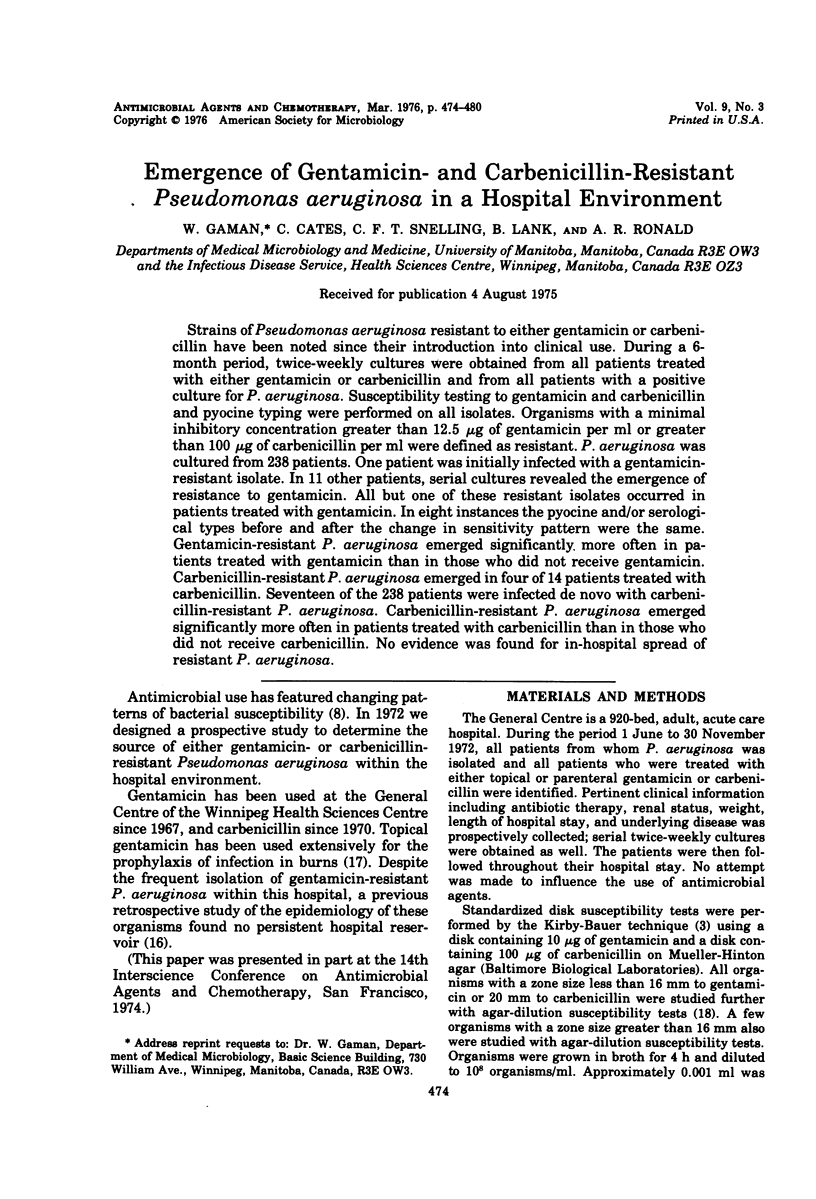
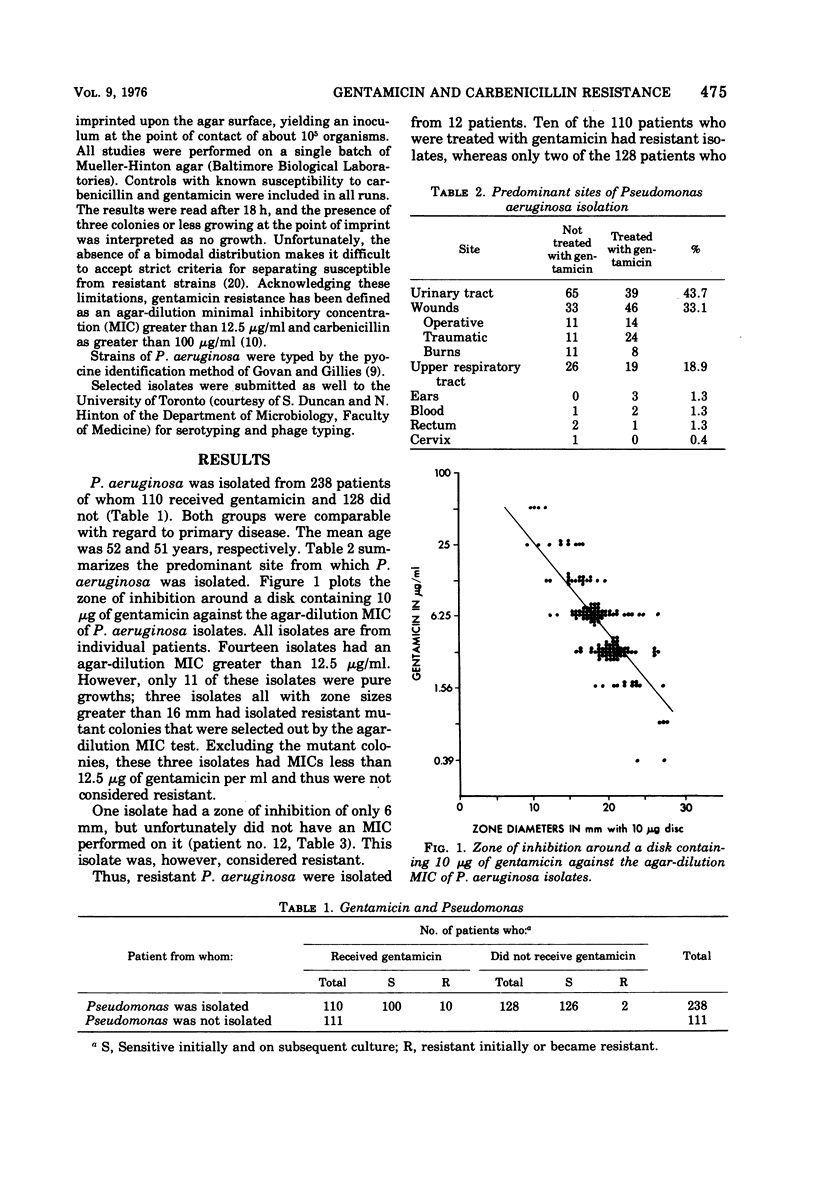
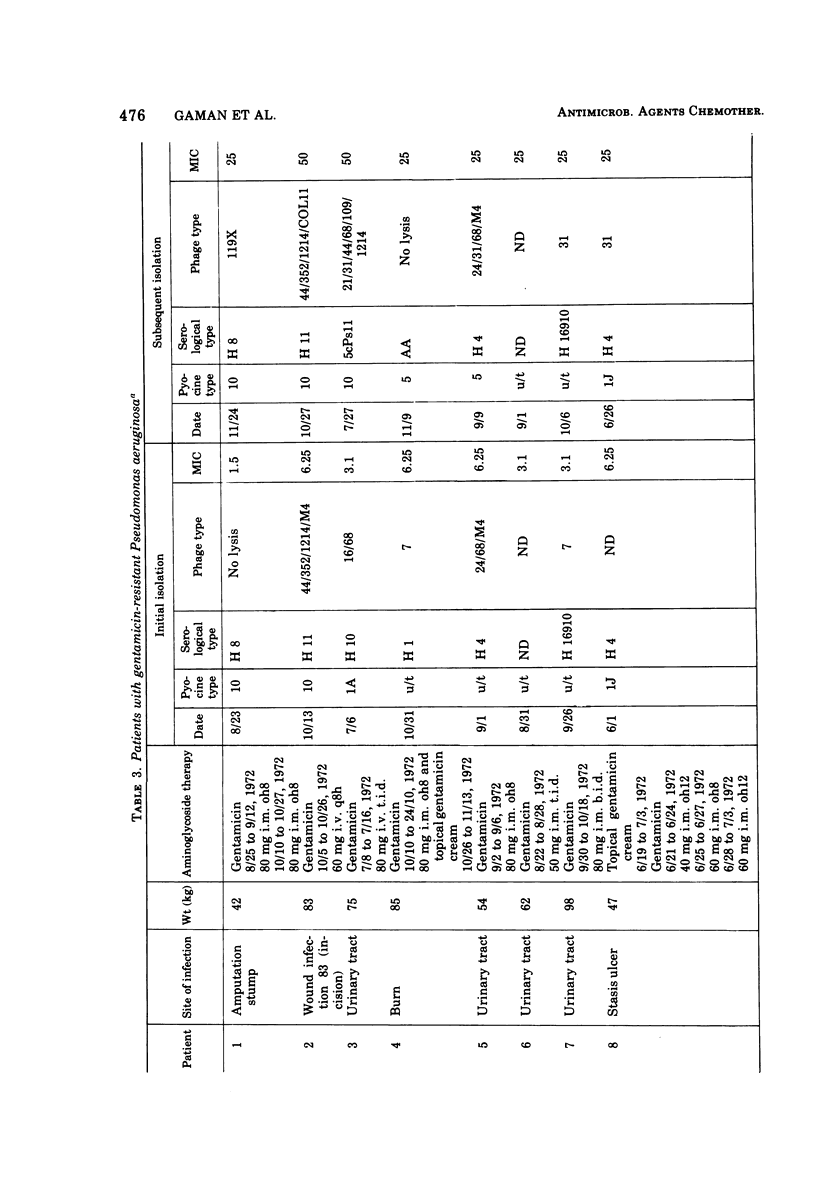
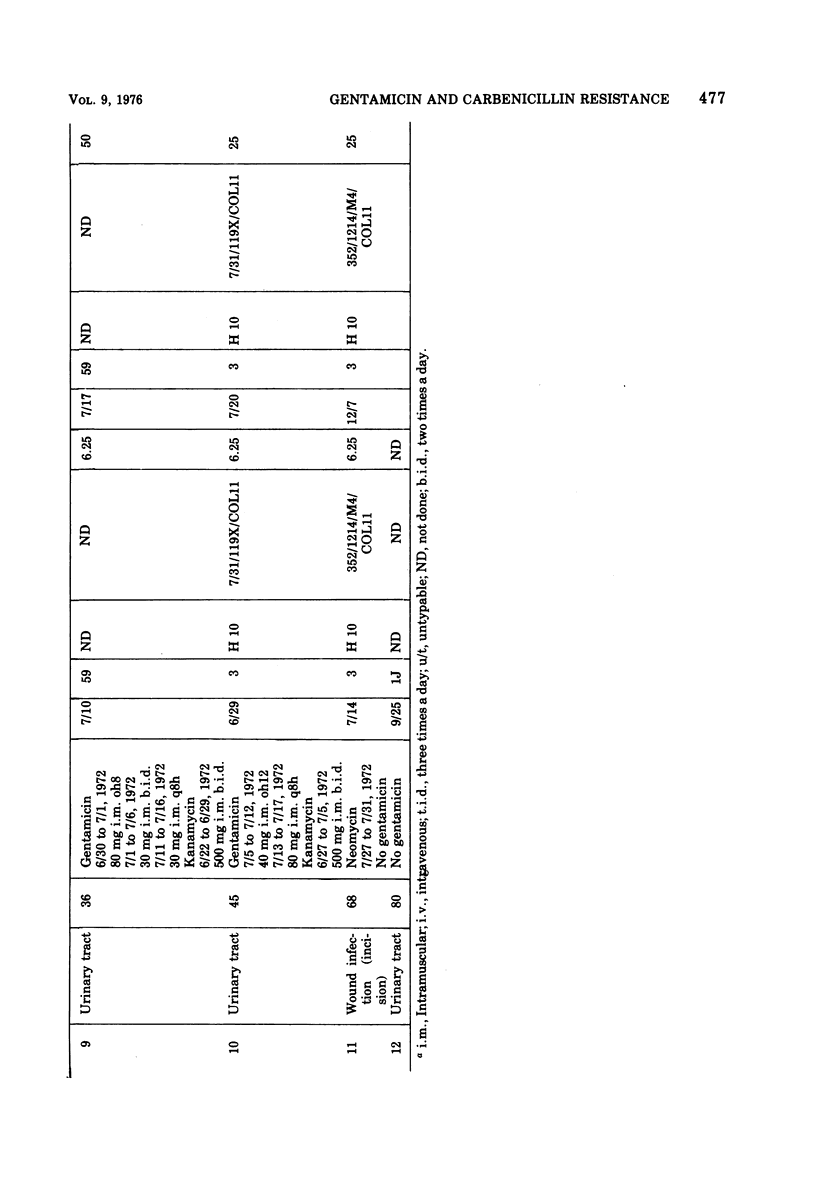
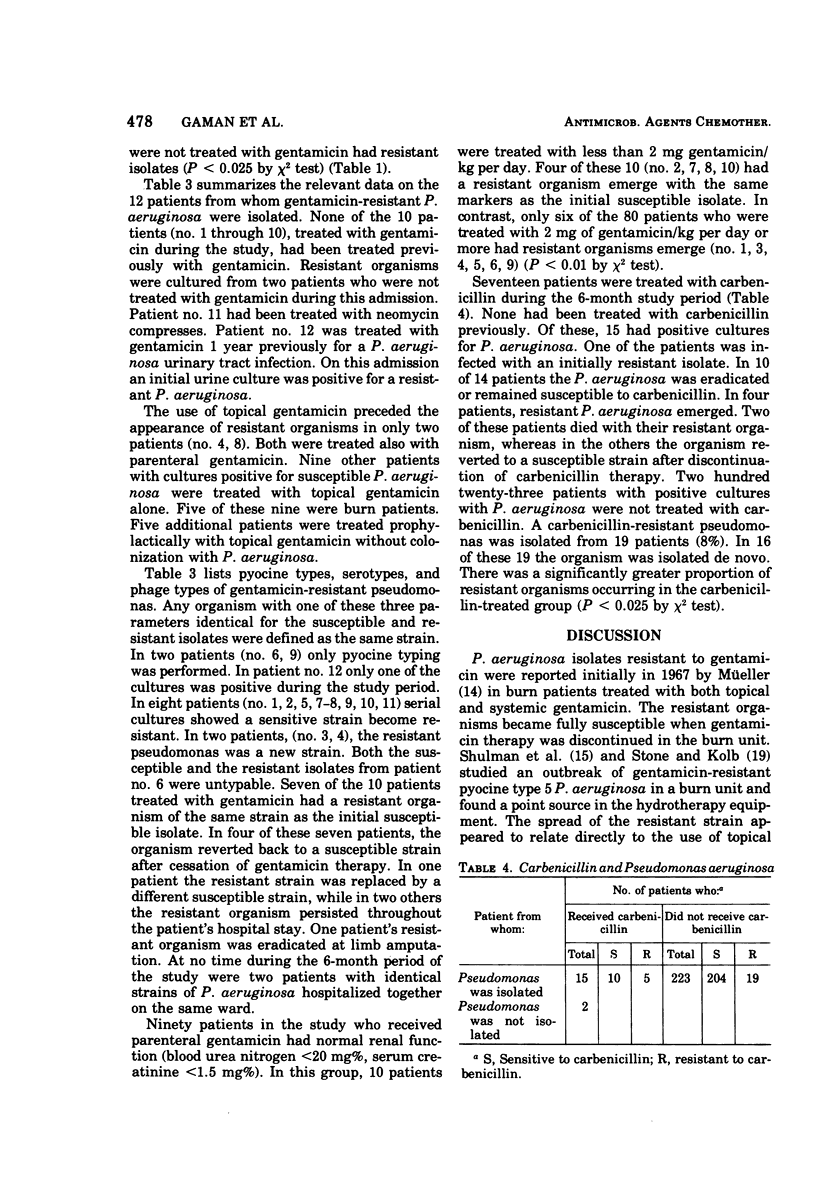
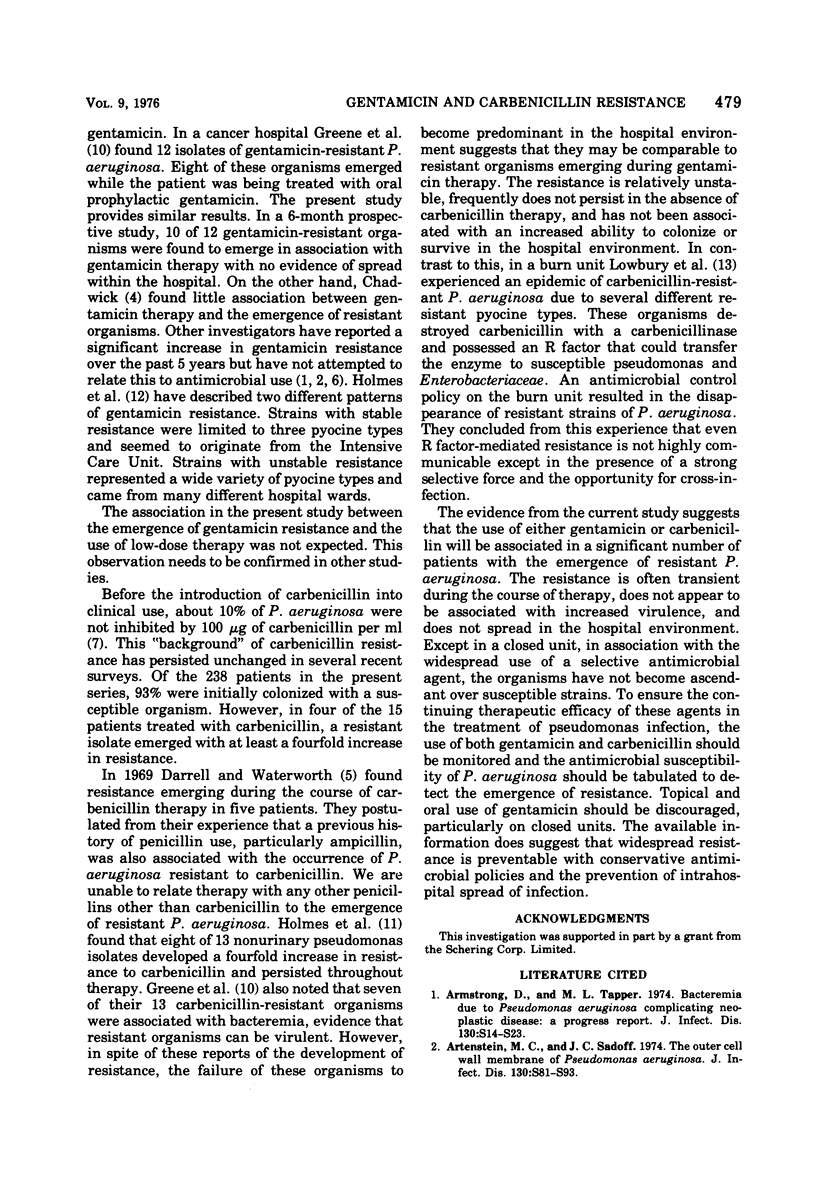
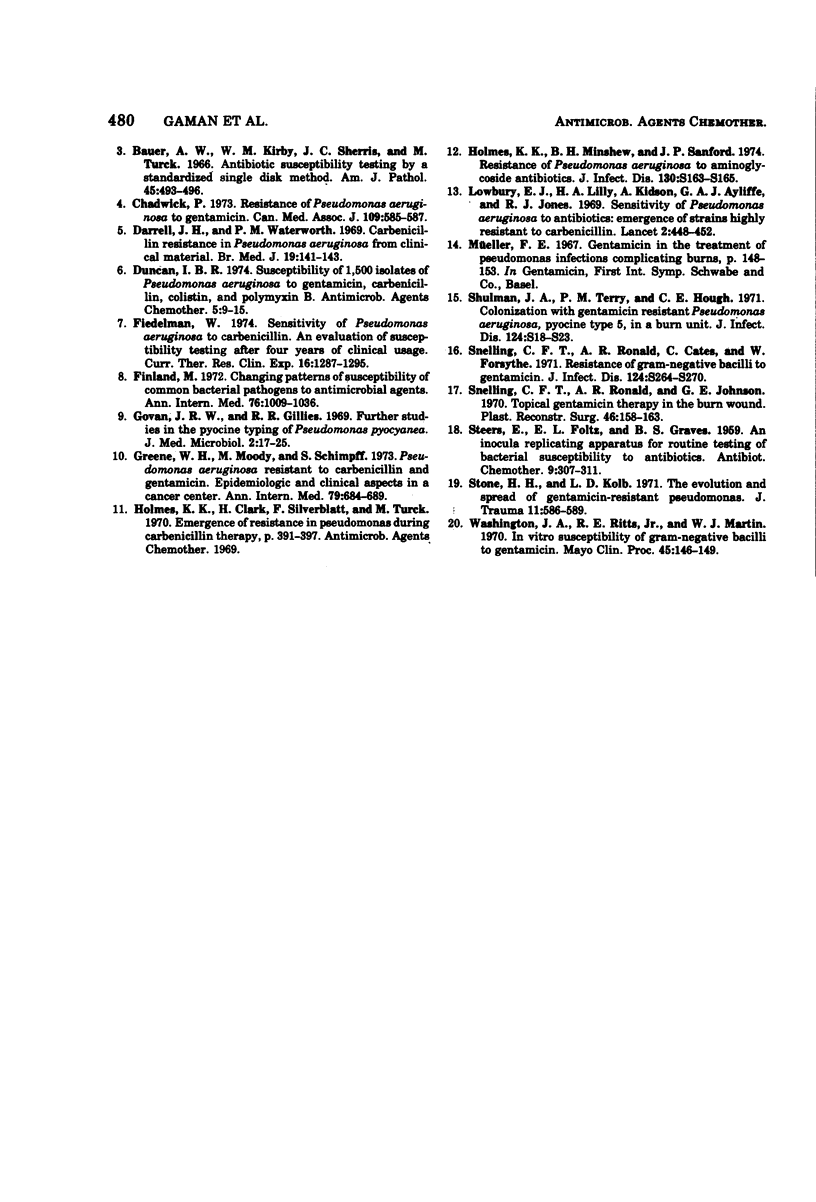
Selected References
These references are in PubMed. This may not be the complete list of references from this article.
- Bauer A. W., Kirby W. M., Sherris J. C., Turck M. Antibiotic susceptibility testing by a standardized single disk method. Am J Clin Pathol. 1966 Apr;45(4):493–496. [PubMed] [Google Scholar]
- Chadwick P. Resistance of Pseudomonas aeruginosa to gentamicin. Can Med Assoc J. 1973 Oct 6;109(7):585–587. [PMC free article] [PubMed] [Google Scholar]
- Darrell J. H., Waterworth P. M. Carbenicillin resistance in Pseudomonas aeruginosa from clinical material. Br Med J. 1969 Jul 19;3(5663):141–143. doi: 10.1136/bmj.3.5663.141. [DOI] [PMC free article] [PubMed] [Google Scholar]
- Duncan I. B. Susceptibility of 1,500 isolates of Pseudomonas aeruginosa to gentamicin, carbenicillin, colistin, and polymyxin B. Antimicrob Agents Chemother. 1974 Jan;5(1):9–15. doi: 10.1128/aac.5.1.9. [DOI] [PMC free article] [PubMed] [Google Scholar]
- Fiedelman W. Sensitivity of Pseudomonas aeruginosa to carbenicillin: an evaluation of susceptibility testing after four years of clinical usage. Curr Ther Res Clin Exp. 1974 Dec;16(12):1287–1295. [PubMed] [Google Scholar]
- Finland M. Changing patterns of susceptibility of common bacterial pathogens to antimicrobial agents. Ann Intern Med. 1972 Jun;76(6):1009–1036. doi: 10.7326/0003-4819-76-6-1009. [DOI] [PubMed] [Google Scholar]
- Govan J. R., Gillies R. R. Further studies in the pyocine typing of Pseudomonas pyocyanea. J Med Microbiol. 1969 Feb;2(1):17–25. doi: 10.1099/00222615-2-1-17. [DOI] [PubMed] [Google Scholar]
- Greene W. H., Moody M., Schimpff S., Young V. M., Wiernik P. H. Pseudomonas aeruginosa resistant to carbenicillin and gentamicin. Epidemiologic and clinical aspects in a cancer center. Ann Intern Med. 1973 Nov;79(5):684–689. doi: 10.7326/0003-4819-79-5-684. [DOI] [PubMed] [Google Scholar]
- Lowbury E. J., Lilly H. A., Kidson A., Ayliffe G. A., Jones R. J. Sensitivity of Pseudomonas aeruginosa to antibiotics: emergence of strains highly resistant to carbenicillin. Lancet. 1969 Aug 30;2(7618):448–452. doi: 10.1016/s0140-6736(69)90163-9. [DOI] [PubMed] [Google Scholar]
- Sadoff J. C., Artenstein M. S. The outer cell-wall membrane of Pseudomonas aeruginosa. J Infect Dis. 1974 Nov;130 (Suppl)(0):S81–S93. doi: 10.1093/infdis/130.supplement.s81. [DOI] [PubMed] [Google Scholar]
- Snelling C. F., Ronald A. R., Johnson G. E. Topical gentamicin therapy on the burn wound. Plast Reconstr Surg. 1970 Aug;46(2):158–163. doi: 10.1097/00006534-197008000-00009. [DOI] [PubMed] [Google Scholar]
- Stone H. H., Kolb L. D. The evolution and spread of gentamicin-resistant Pseudomonads. J Trauma. 1971 Jul;11(7):586–589. doi: 10.1097/00005373-197107000-00009. [DOI] [PubMed] [Google Scholar]
- Tapper M. L., Armstrong D. Bacteremia due to Pseudomonas aeruginosa complicating neoplastic disease: a progress report. J Infect Dis. 1974 Nov;130 (Suppl)(0):S14–S23. doi: 10.1093/infdis/130.supplement.s14. [DOI] [PubMed] [Google Scholar]
- Washington J. A., 2nd, Ritts R. E., Jr, Martin W. J. In vitro susceptibility of gram-negative bacilli to gentamicin. Mayo Clin Proc. 1970 Feb;45(2):146–149. [PubMed] [Google Scholar]


